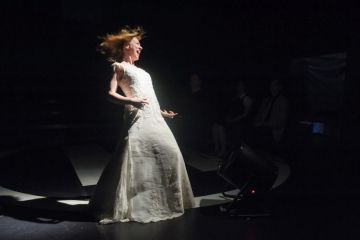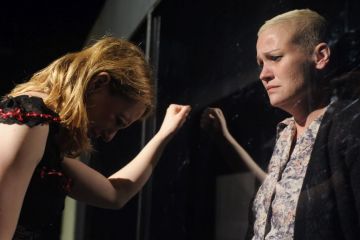Vivian Nielsen
Breaking the Waves
based on the movie by Lars von Trier
Studio
RO

EN

18+

1h 40' without intermission
Bess
Anikó Pethő
Jan
Ervin Szűcs
Dodo
Gizella Kicsid
Minister
Attila Orbán
Dr. Richardson
Balázs Bodolai
Bess' Mother
Júlia Laczó
Terry
Ferenc Sinkó
Pitts
András Buzási
William
Gábor Viola
Examiner
Loránd Farkas
Singer
Lóránd Váta
directed by
Tom Dugdale dramaturg
Eszter Biró set and costume design
Carmencita Brojboiu original music by
Tom Dugdale dramaturg's assistant
Réka Biró, Katalin Deák stage manager
Zsolt Györffy
Anikó Pethő
Ervin Szűcs
Gizella Kicsid
Attila Orbán
Balázs Bodolai
Júlia Laczó
Ferenc Sinkó
András Buzási
Gábor Viola
Loránd Farkas
Lóránd Váta
directed by
Tom Dugdale
Eszter Biró
Carmencita Brojboiu
Tom Dugdale
Réka Biró, Katalin Deák
Zsolt Györffy
Date of the opening: April 25, 2015
Simple, faithful Bess should love God above all else. But Bess dares to share her love with Jan, an outsider whom she passionately marries and begins a happy life with. When Jan suffers a devastating accident, Bess engages in a series of self-sacrifices that she believes have the power to save Jan’s life. Set in a remote village in the Scottish Highlands, Lars von Trier’s 1996 cult film, Breaking the Waves, shocked the film world. Its stark landscapes and naked aesthetics offered no answers, only questions. Why do we turn our backs on the weakest? When does conformity become suffocation? And wouldn’t you say that faith is a feeling, not just a word?
There is no other film I can think of where the performances threaten so violently, so gracefully, to puncture the cinematic frame and become real.
Tom Dugdale



























